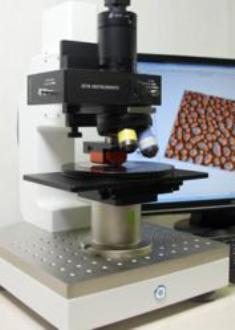Nanoscience Instruments has introduced a three-dimensional optical microscope integrated with an atomic force microscope (AFM).
 One-of-a-kind AFM and Optical Profiler system
One-of-a-kind AFM and Optical Profiler system
The system incorporates a small Nanosurf LensAFM with a superior optical profiler from Zeta Instruments, which is suitable for various metrology applications. The small and easy-to-use LensAFM is designed such that it can be mounted directly over the Zeta microscope, offering full optical access via the device.
It also provides a clear vision of the AFM cantilever placed on the sample. When the AFM is installed directly on the microscope, users can rapidly switch to high-resolution AFM imaging from 3D optical measurements that are of true-color. The AFM complements the abilities of the Zeta microscope by offering a lateral resolution in the order of nm and a height resolution in the order of sub-nm, which cannot be achieved using optical methods alone.
The Zeta-20 optical profiler delivers three-dimensional imaging and metrology ability in a strong and inexpensive package. The Zeta-20 utilizes the proprietary ZDot technology to correct surface features of tiny proportions including roughness on textured wafers. A special optical design allows users to examine transparent substrates and thin films, and a broadband, space-efficient, light source having a dual-LED delivers true color images. With the ability to produce multi-surface images, the Zeta-20 can measure enclosed microfluidic equipment. It can also be used to produce images of features such as high roughness, large steps, high aspect ratio, and deep channels.
The company has delivered this special system owing to its expertise in surface metrology and AFM. Nanoscience co-founder, Mark Flowers stated that they are satisfied with the LensAFM performance on the Zeta-20 microscope. The combined system delivers the special features of each individual technique, while delivering AFM’s high resolution in a distinct, compact and easy-to-use platform. The AFM can deliver exceptionally high resolution and measure roughness on the thin film, while the Zeta-20 can scrutinize the surface beneath the thin film.